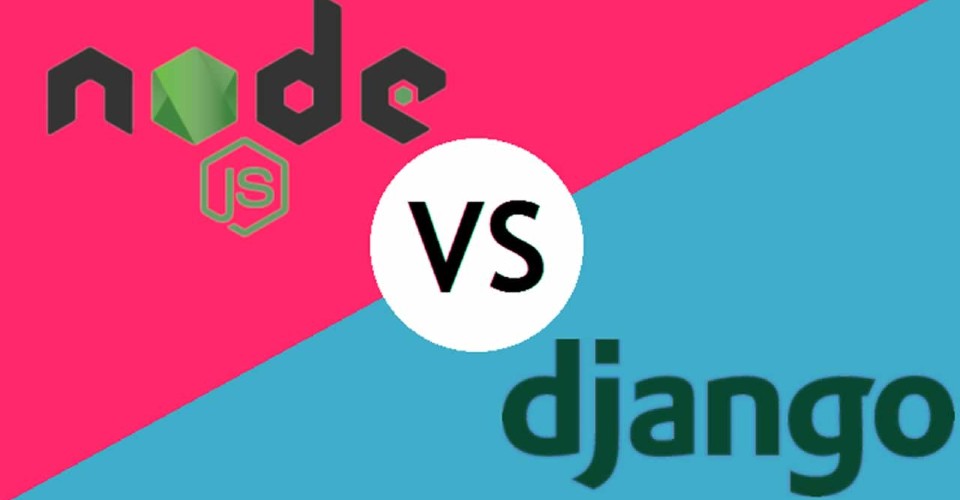
Django vs Node.js: Most Suitable Web App Development Technology
Django and Node.js are two powerful technologies that meet modern web app development requirements for rich functionality and versatile applications. Both are open-source and can be acquired for free without licensing. Since both are equally popular and progressive, some novice web developers are puzzled when deciding which of these options to include in their workflow.
This article provides a comprehensive review and comparison of Node JS and Django. Continue reading to understand their differences and similarities, to select the technology that’s right for your project. Arm yourself with the optimal toolkit and advance your proficiency in web development, to conquer cost-efficient projects on short notice.
Node.js
Key things to know about Node.js:
- The first version was released in 2009 based on C, C++, and JavaScript.
- It stimulated a breakthrough in JavaScript development, providing new opportunities for JS specialists. This relatively simple programming language is usually found in a client-side browser. Node.js can be used for the backend as well, meaning the entire app can be created with JS. The knowledge and skills required of full-stack developers have evolved, and aspiring programmers can begin launching their own apps much faster, without having to learn additional complex technologies.
- Node.js can be easily mastered if you have basic knowledge of JavaScript.
- A large variety of free libraries and extensions make Node.js highly flexible. You can customize the development environment based on your preferences and project objectives.
- An event-driven model establishes connections between events in a browser and on the server-side, and flags the completion of different processes. Fragments of HTML code in a browser can work as subjects, while any JS functions can work as observers.
- Node.js is lightweight and easy to launch.
- It provides advanced scalability and concurrency.
- Web servers automatically receive and respond to requests. No input or output is needed.
Django
Things to know about Django:
- It was first released in 2005.
- It is a Python-based framework, designed mainly to ensure high-speed web development.
- It focuses on high-level processes and abstracts low-level ones.
- Django can be easily learned if you have basic knowledge of Python.
- Web developers need to comply with strict rules and formalized scenarios for project implementation. While this somewhat limits creativity, it ensures accurate code, straightforward app architecture, and fewer errors and bugs on the output.
- Model Template View (MTV) is used as a design pattern. It is similar to the Model View Controller (MVC) model, except for the template component. Model provides access to data, to extract and change it. Template shows how data is displayed to users. View is a link between Model and Template that tracks various events (user actions) and indicates changes that need to be introduced to Model.
- Each Django project can have a single or multiple internal applications.
- It is easy to shift an internal app to a new project.
Node JS vs Django Comparison Table
This table summarizes and compares the characteristics of Django and Node.js, to help simplify your decision:
| Comparison criteria | Django | Node.js |
| First release | 2005 | 2009 |
| Built on | Python | C, C++, and JavaScript |
| Reputation | As an older and well-established technology, Django currently has a more solid reputation than Node.js | Growing in poularity across the globe |
| Definition | Web development framework | JS runtime environment |
| Scalability | Lower than Node.js | Higher than Django |
| Architecture | MTV model | Event-driven model |
| Performance | Higher than Node.js | High |
| Complexity | More challenging to master than Node.js | Easy to master |
| Security | Advanced. App developers don’t need to think about security issues | Normal. Node.js provides decent security, but developers are still recommended to take additional precautions |
| Opportunities for full-stack web development | Not provided | Node.js is highly valued for its ability to create both frontend and backend using a single programming language – JavaScript |
| Community | Moderately active and comparatively small | Highly active. Shortly after their release, Node.js updates are reviewed by its extensive community. Experienced users can advise you on customization and best practices so you can make the most of your development environment |
| Speed of development | Higher | Lower |
| Cost-effectiveness | Higher | Lower |
| Flexibility | Lower. Strict development requirements limit the range of available tools and features | Higher. Developers can take advantage of a variety of tools and features to build JavaScript-based applications from scratch |
| Knowledge required to get started | Python | JavaScript |
| Stability | Higher | Lower |
| Suitable for the development of large apps | Yes | No |
| Support for multi-threading programming | Yes | No |
| Additional features | Content management, user authentication and sitemaps | Non-blocking input-output |
Conclusion
The success of web app development depends heavily on the tools and methodologies your team uses. Node.js and Django are both progressive technologies that can benefit your stack. To make an educated choice, focus on project requirements. If the client expects you to promptly deliver a basic and smoothly running app, Django is your best choice. If you need to customize your development environment to create a unique JS-based application, choose Node.js.
Novice web developers often seek advice from experienced colleagues on whether Phyton is better than JavaScript or vise versa. The truth is that there is no simple answer to this question. Due to a broad variety of available tools and technologies, there is no one-size-fits-all approach to web app development. Every developer has unique preferences when assembling their toolkit. Some developers may recommend Django, while others may lean towards Node.js, and neither is right or wrong.
Don’t blindly trust the opinions of other developers, since their projects and workflow may differ from yours. When considering Django vs Node JS, carefully analyze the characteristics of each technology and match them with your project’s requirements.
